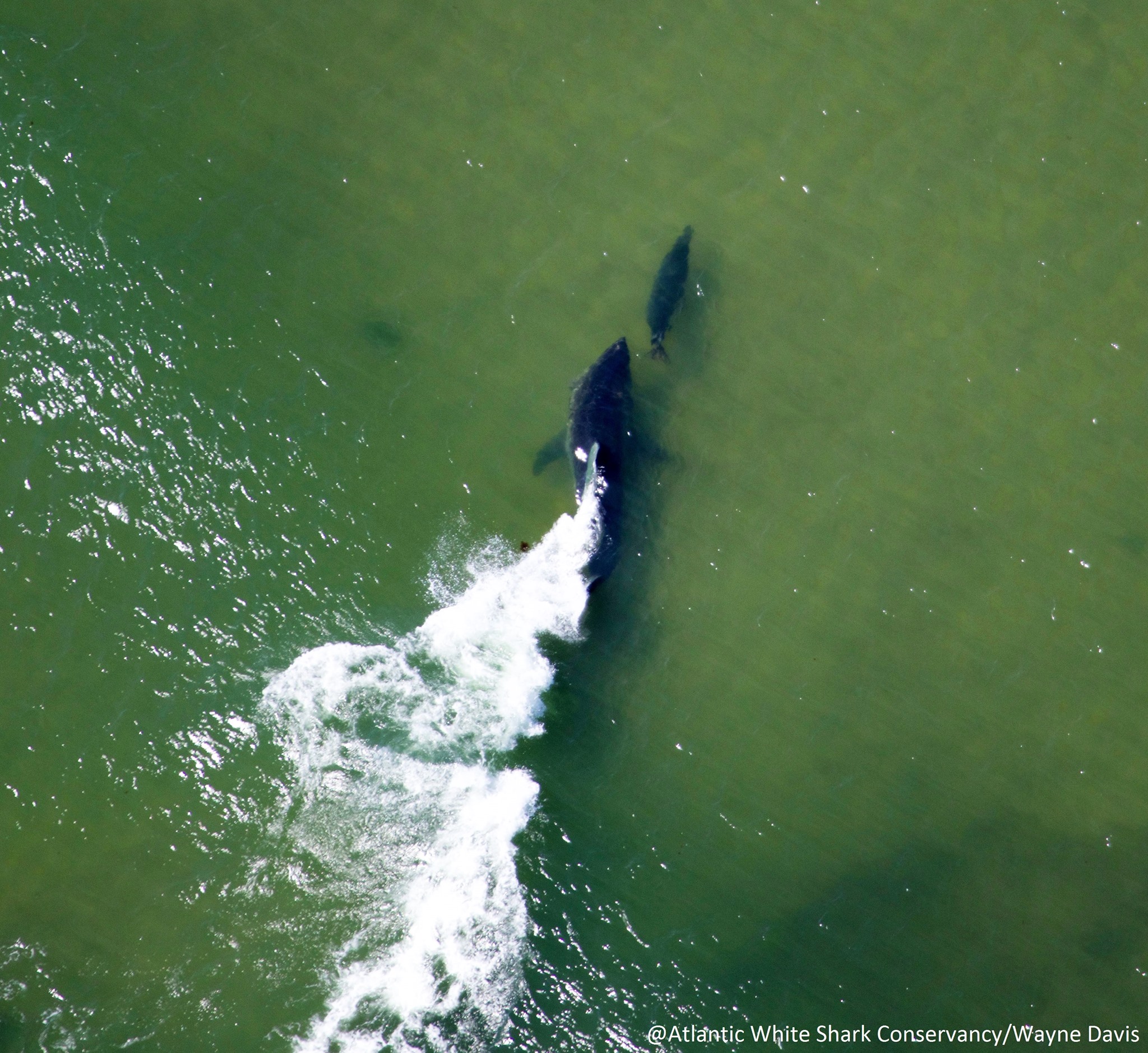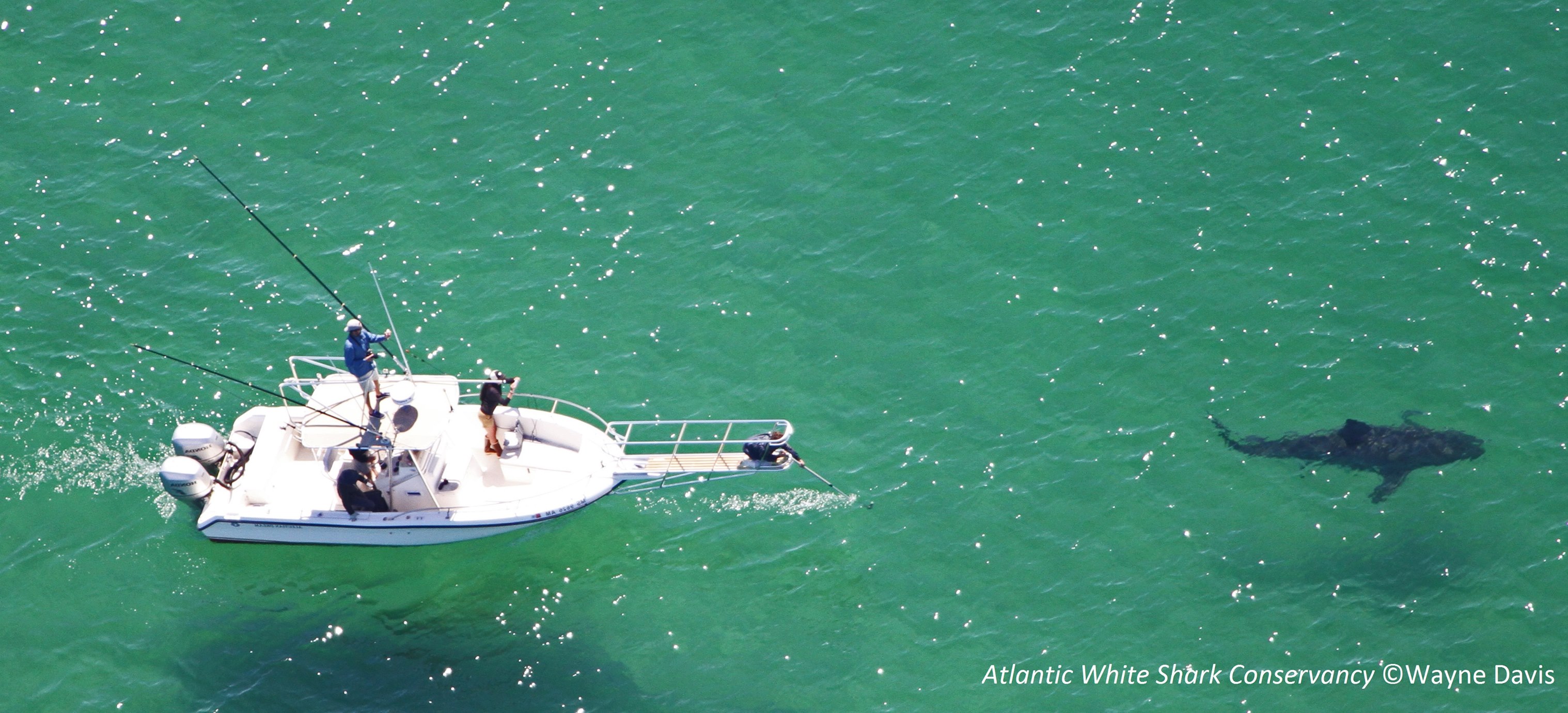Cape Cod's Great White Shark Population May Be Growing

New shark-survey numbers could indicate a healthy population of great white sharks on the Atlantic Seaboard.
Summer surveys led by the Massachusetts Department of Fish & Game and funded by the nonprofit Atlantic White Shark Conservancy identified 147 great white sharks off the coast of Cape Cod between June 2016 and October 2016, including 89 new sharks that researchers hadn't seen in previous years.
The survey project began in 2014, when researchers identified 68 individual great white sharks in the same June-to-October period in the area. In 2015, the team identified 142 great whites, 101 of which hadn't been seen in 2014. [See Stunning Images of Great White Sharks]
The leap from 68 observed sharks to around 140 may mean that the population is growing — or it may not, said study leader Gregory Skomal, a senior marine fisheries biologist and the project leader of the Massachusetts Shark Research Program.

"Some of the media has been very tempted to try to make that leap, and it's hard to do that right now," Skomal told Live Science. The researchers are now working to translate their survey results into estimates of the likely shark population, he said.
Summer visitors
Great white sharks (Carcharodon carcharias) are listed as a vulnerable species by the International Union for Conservation of Nature. They were overfished along the Atlantic coast of the United States for many years, Skomal said, but there is some evidence from various studies that their population may be bouncing back. (Harvesting great whites has been illegal in U.S. waters since 1991.)
"Those are positive signs that conservation is working," he said.
Sign up for the Live Science daily newsletter now
Get the world’s most fascinating discoveries delivered straight to your inbox.
Great whites roam up and down the Atlantic coast and are drawn to Cape Cod for the seals that frolic there in the summer months, Skomal said. They very rarely bother humans: The last fatal great-white-shark attack in Massachusetts occurred in 1936, when a teenage boy was killed, according to Boston.com. There were no other confirmed great-white encounters in the state until 2012, when a great white attacked a 50-year-old man who was bodysurfing off Truro Beach. (He survived.) In 2014, two kayakers were knocked into the ocean by a great white shark that bit one of their boats; neither was attacked.
Nevertheless, Skomal said, the more information state officials have on great-white population dynamics and movements, the better equipped they will be to manage the beaches where both great whites and humans use the water. The National Park Service at Cape Cod National Seashore recommends that swimmers steer clear of seals, swim in groups, and avoid swimming at dawn and dusk, when sharks are the most active. [How to Avoid a Shark Attack]
What we know
Skomal and his colleagues have already found seasonal patterns to great-white movements near Cape Cod. Many, he said, leave the area at the end of summer or the middle of fall, and many return to Cape Cod year after year, though some appear to be newcomers.
"The second year, 70 percent of the sharks [identified] were new, and the third year, 60 percent of the sharks were new," Skomal said. It's possible that some of the new sharks are repeat visitors that were missed in previous surveys, which are done from airplane and boat. Others probably truly are first-time visitors, Skomal said.
The researchers have also noticed a broader size range of sharks since they first started tagging studies in 2009, Skomal said. More juvenile great whites could indicate a growing Atlantic shark population, he said. A doctoral student from the University of Massachusetts will be spearheading population-modeling efforts, Skomal said, which should clarify the true size of the great-white-shark population that visits Cape Cod. The researchers also plan to do two more years of summer surveys to keep an eye on Cape Cod's toothiest tourists.
Original article on Live Science.

Stephanie Pappas is a contributing writer for Live Science, covering topics ranging from geoscience to archaeology to the human brain and behavior. She was previously a senior writer for Live Science but is now a freelancer based in Denver, Colorado, and regularly contributes to Scientific American and The Monitor, the monthly magazine of the American Psychological Association. Stephanie received a bachelor's degree in psychology from the University of South Carolina and a graduate certificate in science communication from the University of California, Santa Cruz.










